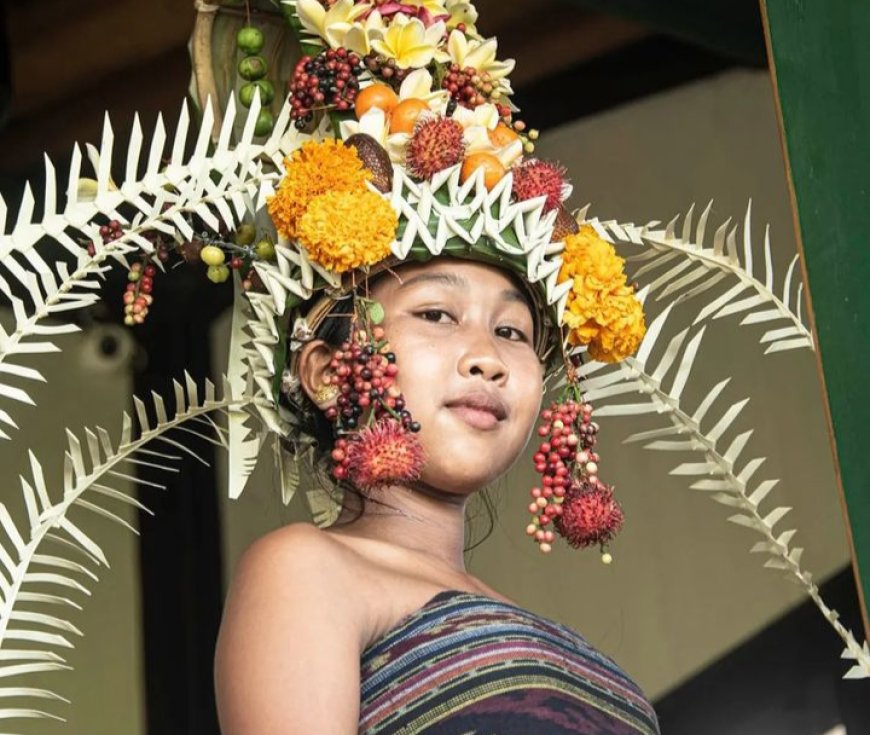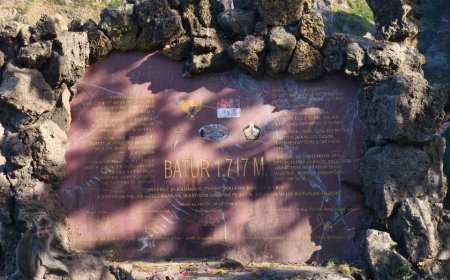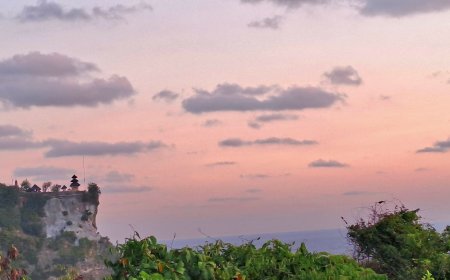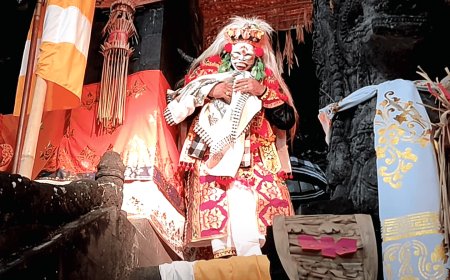The Ancient Rejang Dance: The Sacred Rejang Pala Dance Legacy of Balang Tamak Temple
In the enchanting natural beauty of Bali and its profound cultural richness, there exists a traditional dance that depicts the grace, spirituality, and uniqueness of its people's lives: the Rejang Dance. The existence of the Rejang dance in Dewa Yadnya ceremonies in Bali has given rise to many versions that have evolved within the community. However, one of the ancient sacred Rejang dances from Eastern Bali has its own distinctive characteristic, known as the Pala Rejang Dance.

Bali's dance artistry is an expression filled with beauty, grace, and spirituality. Rooted in deep culture and rich history, Balinese dance is more than just body movements; it's a narrative that tells the mythology, legends, and everyday life of the Balinese people. Every gesture, facial expression, and hand movement carries profound meanings that depict emotions, characters, and stories being conveyed. Balinese dance is often intertwined with religious ceremonies and traditional rituals, strengthening the connection between art, belief, and everyday life in Balinese society. One of the dances closely linked to religious rituals or ceremonies is the Rejang Dance. Rejang Dance involves simple and graceful movements, performed by female dancers (selected or a mix of various ages) in groups or mass formations.
In the present era, the Rejang Dance has experienced a surge in popularity. The phenomenon of various forms of Rejang dances seems to have become a trend, firmly establishing its presence amid the global wave of modernization. Amidst the growing popularity of Rejang dances in Bali, there is a famous heritage Rejang dance in the village of Nongan, Rendang District, Karangasem Regency, Bali, known as the Rejang Pala Dance. The Rejang Pala Dance is a sacred dance legacy from Pura Balang Tamak, now also performed during the village ceremony (Usaba Desa) at Pura Pesamuhan Agung in Nongan village.
In the past, the local community believed that the Rejang Pala Dance was always performed during the Usaba Pala ceremony. Usaba Pala is held every full moon of Kaulu (the eighth full moon in the Balinese calendar/Caka year) at Pura Balang Tamak. Usaba Pala is a ceremony expressing gratitude to Dewi Sri for the successful harvest. This, of course, is closely related to the function of Pura Balang Tamak as Pura Ulun Suwi or Pura Subak and serves as the central (head) point for the small subaks around it.
However, the Rejang Pala Dance experienced a hiatus due to the interruption in the dancer regeneration process, leading to the loss of its choreographic traces. The only remnants left were the rejang gelungan (head decorations) containing a few fruits and flowers, specifically 11 pieces, placed in Bale Pasamuhan, the spot where Jero Gede Balang Tamak's pratima was laid during the ceremony. In fact, the Rejang Pala Dance was reconstructed in 1984, but its existence faced stagnation once again. Finally, in 2019, the leaders of the Nongan Traditional Village and all elements of the Nongan Traditional Village community took the initiative to reconstruct or 'nangiang' (revive) the Rejang Pala Dance as a preservation effort for the local cultural heritage. Reconstructed by Ida Ayu Wayan Arya Satyani and I Gusti Ngurah Sudibya, the Rejang Pala Dance, which was previously performed only during a series of 'piodalan' (temple anniversary) events at Pura Balang Tamak (known as Usaba Pala), is now also performed as part of the Usaba Desa ceremony at Pura Pasamuhan Agung. Therefore, the preservation of this dance is not only the responsibility of the administrators of Pura Balang Tamak but also a collective obligation embraced by the entire local community.

Rejang Pala Dance Perfomance (Source: Editorial Collection)
After undergoing a lengthy process of reconstruction, the Rejang Pala Dance was successfully brought to life and was performed for the first time, or 'Makebah,' on April 8, 2019, during the Usaba Desa ceremony at Pura Pasamuhan Agung in the village of Nongan. Usaba Desa is a Dewa Yadnya ceremony held in the village of Nongan once a year, specifically on the third day of the month of Jiyestha, to welcome (mamendak) Ida Betara Dalem during the procession or paruman at Pura Pasamuhan Agung. The Usaba Desa ceremony lasts for three days, and throughout this period, the Rejang Pala Dance is performed as an integral part of the ceremony.
In the Rejang Pala Dance, the dancers, known as 'pragina' in Balinese, are women classified into three different age groups: young girls called Rejang Alit, teenage girls called Rejang Daha, and mature women called Rejang Lingsir. Philosophically, each classification holds its own significance. Rejang Alit represents the future (nagata), Rejang Daha represents the present (wartamana, a vulnerable time that must be carefully maintained in every action), and Rejang Lingsir represents the past (atita, a time that serves as the root and strength, akin to mother earth). The dance is performed with the Rejang Alit dancers forming the front row, followed by the Rejang Daha dancers, and the Rejang Lingsir dancers at the rear.
The distinctive feature of the Rejang Pala Dance can be observed in its makeup, especially in the head decoration known as 'gelungan.' The gelungan in the Rejang Pala Dance is adorned with various fruits (known as 'sarwa pala'), such as rambutan, salak, oranges, ceroring, kepundung, boni, and others, symbolizing worship and gratitude to the gods for the abundant fertility bestowed upon the farmers. Because the head decoration in this dance incorporates fruits, and in Balinese, fruits are called 'pala,' this sacred dance became known to the people of Nongan as the Rejang Pala Dance. The performance of the Rejang Pala Dance is accompanied by Gambelan Gambang, considering that Gambang is one of the ancient gamelans and is mentioned in one of the verses of the kakawin Mayantaka concerning Gambang and Rejang. The music for the Pala Rejang Dance was composed by Mangku Dalang Yoganata and is played by four musicians.

Gelungan Rejang Pala Dance (Source: Editorial Collection)
The performance of the Rejang Pala Dance during the Usaba Desa ceremony on April 8, 2019, took place at the Marga Agung or the central area of the Nongan-Besakih main road, precisely located at Pura Pesamuhan Agung. Towards the end of the performance, all Rejang Pala dancers formed a single line and then moved towards the front courtyard of the temple (jaba pura) to prepare for the conclusion of the dance. In this final part, specifically, the Rejang Daha dancers, one by one, entered the inner sanctum of the temple to continue the mider procession, circling the shrines and offerings three times. Meanwhile, the Rejang Alit and Rejang Lingsir dancers remained in the outer courtyard (jaba pura). After the mider procession inside the temple was completed, the performance of the Rejang Pala Dance concluded with a collective prayer.
Tari Rejang Pala is an invaluable part of Bali's cultural heritage. As a sacred dance, it carries profound meanings and celebrates the beauty of nature and the fertility of Bali's land. Despite facing challenges in its regeneration process, the preservation and reconstruction efforts by the community of Nongan village have revived the splendor of this dance. Thus, the Rejang Pala Dance is not just a dance, it is also a part of Bali's cultural heritage that must be preserved. In the harmony of dance movements, music, and spirituality, the Rejang Pala Dance continues to be a source of pride for Bali, reminding the world of the island's beauty and cultural wisdom.





























































